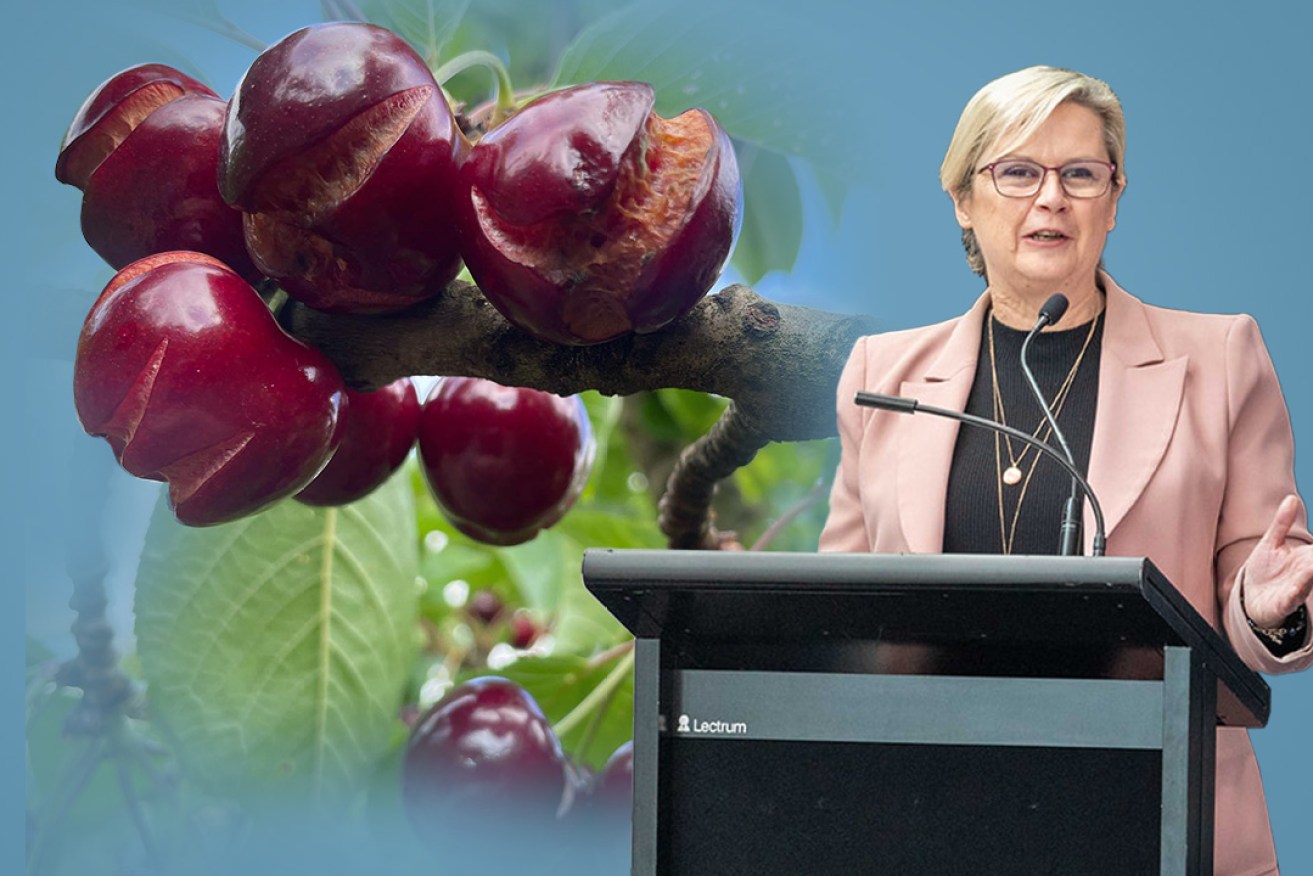Call to rally around SA growers as heavy rain hits cherries hardest
Wild weather is devastating local cherry growers after downpours destroyed more than half their ripening crops in the lead up to Christmas, while the South East grain harvest remains waterlogged.


Primary Industries Minister Clare Scriven said early reports showed cherry producers were most affected by severe weather lashing SA over the past week, with more than “50 per cent of the ripe fruit” grown mainly in the Adelaide Hills destroyed.
“The impact of the recent extreme weather events has varied across the state and between primary industry sectors with assessments still being undertaken,” Scriven said.
“We do know that many early season cherry varieties had already been picked, and there are lesser ripe cherries on the trees that will make it through this week.”
Everlong Orchard in the Adelaide Hills has told supporters that it has rain-split cherries in “a large percentage of our crop” , while Wotton’s Cherries announced on Facebook that “recent weather has been extremely challenging over the past days with large rain falls resulting in extensive damage to our cherry crop”.
Scriven called on South Australians to rally around primary producers over the festive season as they worked to save produce.
“The good news is this reduced harvest will be used to supply SA local retailers and will be available in time for Christmas,” she said.
“We’re encouraging all South Australians to show our primary producers and farmers across the state we’re supporting them by buying local produce this Christmas season.”
This latest intense weather event, with bucketing rain and around 100,000 cloud-to-ground lightning strikes between Sunday and Tuesday, also blacked out tens of thousands of South Australians.
It closed nine public school sites, closed roads, brought down trees and impacted commercial fishers and grain growers during harvesting, particularly in the South East.
Heavy rainfall led to the closure of several bays for commercial shellfish harvesting, including Port Vincent and Stansbury on Yorke Peninsula, Cowell’s Franklin Harbour, Vickers Island and Proper Bay near Port Lincoln on the Eyre Peninsula.
Grain Producers SA chief executive officer Brad Perry said grain growers across the state managed to get most crops harvested early before extensive thunderstorms and deluges battered the state.
However, the later harvest region in the cooler climate South East and some patches of farmland across the state were caught, with farmers waiting to assess if cereal crops of mainly wheat were damaged.
“Farmers in the South East were potentially impacted by two big events of high rainfall but it’s a bit wait and see,” Perry said, adding that some regions recorded around 100 millimetres of rain.
“It could affect the quality of the grain, depending on how much rain, and it will push harvest out later for those intending to take a Christmas break; they might need to be on the header once there are some warmer days to dry out the paddocks.”
The state is now tracking to produce an average grain harvest year of nine million tonnes, compared to a record harvest in SA last year of more than 12 million tonnes of grain.
On the positive side of the storms, farmers received “about a half a year’s worth of rainfall” after six months of dry conditions, establishing the ground well for seeding next season, Perry said.
A Primary Industries and Regional Development Department spokesperson said there were concerns over field crop damage and quality in areas where harvest had not finished, in particular Yorke Peninsula and Kangaroo Island.
“Persistent humid conditions have also raised concerns on the increased risk of flystrike in sheep, while an increased risk of downy mildew remains in grape vines across the state,” the spokesperson said.
Grape growers were in a better position with crop timing but must remain vigilant to protect crops from problems like powdery and downy mildew, according to South Australian Wine Industry Association chief executive Inca Lee.
Lee said there were “huge amounts of rainfall” recorded across the state but the nature of thunderstorms meant falls varied from one vineyard to the next.
She said the rain arrived after the delicate flowering period on vines, and grapes were not as susceptible to damage such as splitting because they had set into hard green bunches before ripening over the next few months.
The weather timing afforded some relief for growers who are already facing challenges with falling global wine consumption, lost export markets and a glut of red wine.
“The primary focus is in protecting the canopy, protecting the crop that has set and making sure that is part of the general vineyard management,” Lee said.




